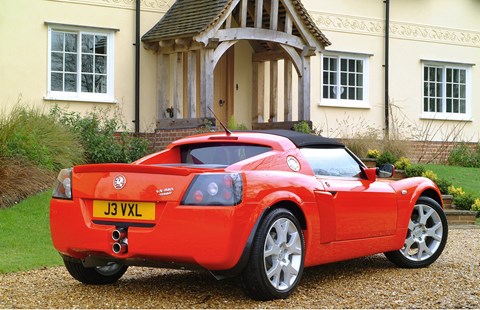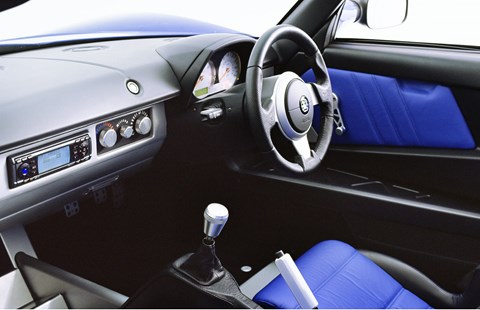► Remembering the Vauxhall VX220
► A pedigree underdog, or just a second-rate Elise?
► Ben Whitworth passes judgment on Luton’s legend
I still remember the launch of the VX220 with damp-palmed clarity. It was held in Jerez, and to allow the media to ‘fully explore the car’s dynamics’ some bright spark in the public relations department thought it would be a good idea to allow us to thrap the Vauxhalls around the Circuito de Jerez. Very fast cars driven by journalists on a very demanding circuit. What could possibly go wrong?
It was carnage. As I exited Michelin Corner on my second lap, the car in front of me spun so hard and fast into the Armco that it pinballed backwards onto the track metres in front of me, forcing me to take the kind of evasive action that left me on the grass with that metallic near-death taste in my mouth.
Within a few hours, another journalist lost it on the fast right-hand Sito Pons corner and stuck his VX220 into the barriers. It was a long ignoble walk back to the pits in his pristine race booties to explain that he had lost control ‘while sneezing’.
VX220: a lively kind of Vauxhall
By the end of the day the two VXs were being put away with dustpans and brushes, and the rest of the fleet were having a lot of gravel removed from their orifices. A third was totalled on the way back from the track to the hotel, no one seriously injured, thank goodness. It was that kind of car, the VX220.
I think the reason behind this massacre was simple – this was a Vauxhall. You know, like a Corsa. It had anti-lock brakes and an airbag. Like a Vectra. But the VX220 was unlike any other Vauxhall we’d experienced before – or since. Sure, it had a Griffin on its nose and could be serviced by your local dealer, but it was also raw, searingly quick and truly challenging to drive. Not very Vauxhall at all, then.

Built by Lotus using its innovative extruded aluminium chassis technology – the Elise’s basic tub was used but with a 30mm longer wheelbase and a 20mm wider rear track – the VX was powered by a grunty 145bhp 2.2-litre nat-asp engine, driving the rear wheels through a five-speed manual box. Weighing just 870kg, the two-seater was indecently quick, blitzing to 60mph in just 5.6 seconds and onto the wrong side of 135mph.
The Lotus from Luton
It was also thrilling and rewarding in equal measure to punt hard and fast. That larger and wider chassis made it stable (except when on a circuit basking under Spanish summer sun, obviously); the unassisted steering was precise, accurate and feelsome; the ride quality possessed that magic Lotus quality that allowed the Vauxhall to breathe over the road; and the brakes were well up to dealing with the pace dished up by the torquey Ecotec engine. Even the slightly sloppy long-throw gearshift quality couldn’t detract from the car’s all-round brilliance. And it looked superb. I know beauty is in the eye of the beholder, but I loved the VX’s chiselled and edgy looks. It was a dramatic car in every sense. And it was, without doubt, a significantly better car than a contemporary Elise.
The 197bhp 2.0-litre Turbo (red car pictured) that arrived two years turned everything up to 11. It was a devastating weapon that would laugh in the face of an M3, wee-wee all over an Evo VII and show a 911 the back door. All this from a car with a Vauxhall badge.
And yet the VX220 had none of the cachet that any rabidly quick supercar-slayer should have. Purists derided its lack of kudos and heritage, while adventurous TT, MX-5 and Z4 owners found it too raw and compromised. Two difficult stools between which to fall. Which is why it’s a brilliant second-hand buy, the perfect underdog, and my favourite Vauxhall to date.
Click here for more blogs by Ben Whitworth.
